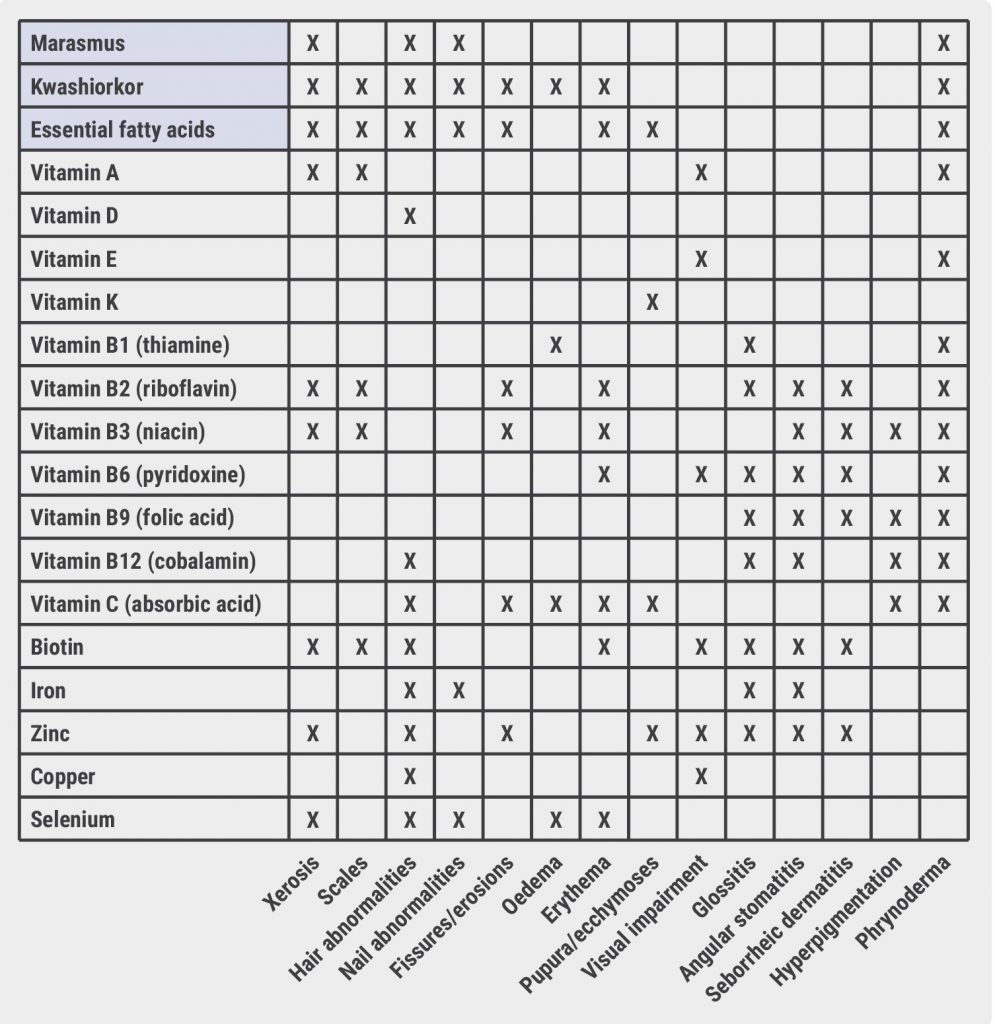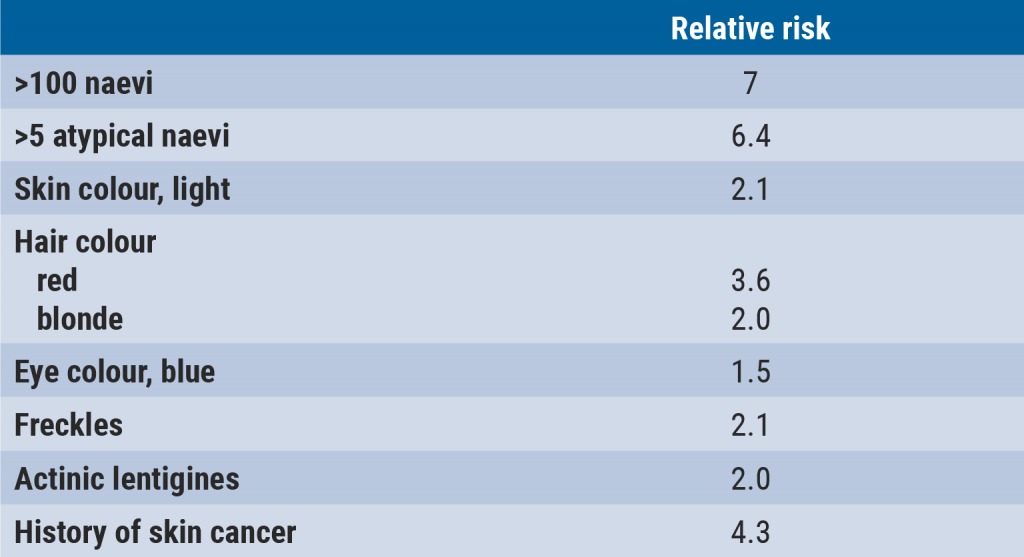https://doi.org/10.55788/16241d0b
Nutrition and atopic dermatitis
“About 70% of the patients with atopic dermatitis will avoid specific foods to improve their disease,” said Prof. Speeckaert [1]. “However, there is no evidence that this actually works, and it appears that non-allergic mechanisms do not play an important role in the course of the disease.” He pointed out that flares of atopic dermatitis without other allergic symptoms are unlikely to be caused by food allergies. “Atopic dermatitis usually develops before food allergies develop. Therefore, it is unlikely that food allergies have an impact on eczema,” clarified Prof. Speeckaert [1,2].
Prof. Speeckaert stressed that strict elimination of diet or calories is discouraged, but that excluding egg and cow’s milk may have a positive effect on atopic dermatitis in children. Although excluding specific foods does not improve atopic dermatitis in most cases, certain diets have demonstrated a beneficial effect on eczema. Moreover, a powerful placebo effect of dietary change is seen in many conditions, including skin diseases. The best effects of diet change on atopic dermatitis were reported for a dairy-free diet, a paleo diet, and a gluten-free diet [3]. According to Prof. Speeckaert, oolong tea, L-histidine, and hempseed oil have displayed positive effects on atopic dermatitis as well. However, the results of the studies showing these effects have not been confirmed and should be interpreted with caution [4].
Nutrition and vitiligo
“Patients with vitiligo are generally very interested in food and vitamins,” continued Prof. Speeckaert. With respect to food interventions, polypodium leucotomos in combination with phototherapy has the most profound effect on repigmentation [5]. “Ginkgo biloba is another plant extract that has demonstrated a positive effect on vitiligo,” added Prof. Speeckaert [6]. “Online, several sun-protection products are available that contain polypodium leucotomos or ginkgo biloba that dermatologists can recommend to their patients.” Finally, a study assessing oral gliadin-protected superoxide dismutase in addition to phototherapy showed promising efficacy of this agent on patients with non-segmental vitiligo [7].
Nutrition and acne and hair loss
Prof. Speeckaert briefly described the effects of certain foods on acne. “Products with a high glycaemic index score, skim milk, whey proteins, fat food, and vitamin B12 are known to worsen acne, whereas omega 3 fatty acids, fruit, and vegetables improve this skin condition,” he said. Next, he spoke about nutrition and hair. “In patients with alopecia areata and coeliac disease, a gluten-free diet reduces hair loss [8]. Furthermore, supplementing ferritin >50 μg/L in case of telogen effluvium is recommended in pre-menopausal women or individuals with nutritional deficiencies. “Finally, patients with hair loss should avoid biotin, since this supplement may interfere with laboratory tests,” emphasised Prof. Speeckaert.
Nutritional dermatoses in patients hospitalised or with cancer
Evidence shows that 30–90% of the hospitalised patients or cancer patients suffer from malnutrition, mostly comprising mixed nutrient deficiencies [9]. “This is an underrecognised problem,” according to Prof. Speeckaert. He explained that patients with persistent chemotherapy-related alopecia should be checked for ferritin, TSH, vitamin D, zinc, and proteins. If laboratory tests show a deficiency, supplementing these elements can improve the regrow of hair. Similarly, patients with therapy-resistant papulopustular dermatitis who receive EGFR inhibitors may have zinc deficiencies. Zinc supplementation may improve symptoms by approximately 25%. “Furthermore, protein deficiencies are mostly relevant in non-healing ulcers,” explained Prof. Speeckaert. “Proteins are lost through wound exudate and crucial for all stages of wound healing.” Protein shakes may offer a solution.
Nutrition deficiency disorders
Finally, Prof. Speeckaert discussed a broad spectrum of nutrition deficiencies that may be relevant to dermatologists. “Vitamin deficiencies are often hard to recognise,” said Prof. Speeckaert. “Although this issue does not frequently occur in Western countries, we may encounter vitamin deficiencies in people with a decreased intake, such as homeless people, alcoholics, drug addicts, and individuals with eating disorders, or in individuals with increased use, such as patients with chronic diseases or patients with malabsorptive conditions.
At the end of his presentation, Prof. Speeckaert mentioned 6 entities that dermatologists should particularly be aware of: phrynoderma, vitamin C deficiency, vitamin K deficiency, pellagra, acrodermatitis enteropathica, and visual deficits. He provided an overview of the various nutrient deficiencies and the accompanying symptoms (see Figure).
Figure: Nutrient deficiency and symptoms [1]

- Speeckaert R. Voedingsdeficiënties en de huid. Blok 5, Dermatologendagen 2023, 9–10 March, Ermelo, the Netherlands.
- Chang A, et al. J Allergy Clin Immunol Pract. 2016;4(2):229–336.e1.
- Nosrati A, et al. J Dermatolog Treat. 2017;28(6):523–538.
- Callaway J, et al. J Dermatol Treat. 2005;16(2):87–94.
- Speeckaert R, et al. Eur J Dermatol. 2021;31(5):667–669.
- Di Nardo V, et al. Dermatol Ther. 2019;32(4):e12625.
- Fontas E, et al. J Eur Dermatol Venereol. 2021;35(8):1725–1729.
- McMichael AJ, et al. 2022 AAD Annual Meeting, 25–29 March, Boston, USA.
- Marsh RL, et al. JAAD. 2020;82(5):1226–1228.
Posted on
Previous Article
« Melanoma: Surveillance and follow-up Next Article
The role of surgeons in stage I–II melanoma »
« Melanoma: Surveillance and follow-up Next Article
The role of surgeons in stage I–II melanoma »
Table of Contents: DDD 2023
Featured articles
Dermato-Oncology
The role of surgeons in stage I–II melanoma
Melanoma: Surveillance and follow-up
When to screen for anal intraepithelial neoplasia?
JAK Inhibitors
Eligibility and selection of JAK inhibitors for constitutional eczema
Nutrition and the Skin
Obesity and the skin: state of affairs
What's New?
The importance of anti-microbial proteins in the skin
OCT non-inferior to biopsy in basal cell carcinoma
Infections
Scabies: Therapy failure and tips for the clinic
Related Articles

March 27, 2023
DDD 2023 Highlights Podcast

May 10, 2023
Melanoma: Surveillance and follow-up
© 2024 Medicom Medical Publishers. All rights reserved. Terms and Conditions | Privacy Policy
HEAD OFFICE
Laarderhoogtweg 25
1101 EB Amsterdam
The Netherlands
T: +31 85 4012 560
E: publishers@medicom-publishers.com

